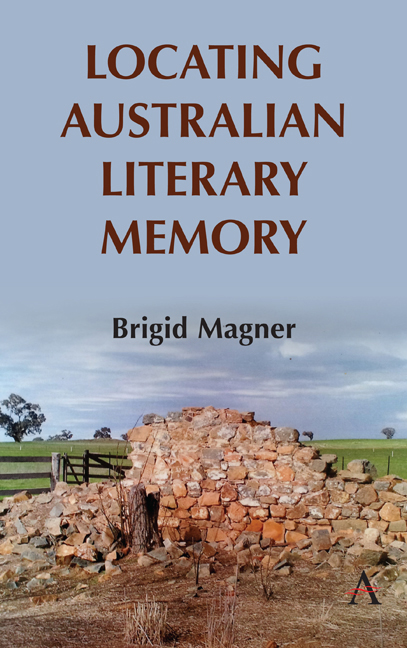Book contents
- Frontmatter
- Contents
- List of Illustrations
- Acknowledgements
- Introduction: Remembering Absent Authors
- Chapter One Adam Lindsay Gordon's Grave
- Chapter Two Joseph Furphy in the Riverina
- Chapter Three Henry Handel Richardson and the Haunting of Lake View
- Chapter Four Henry Lawson Country
- Chapter Five The Multiple Birthplaces of A. B. ‘Banjo’ Paterson
- Chapter Six Nan Chauncy's Sanctuary
- Chapter Seven Living Memorials: The Houses of Katharine Susannah Prichard and Eleanor Dark
- Chapter Eight Statue Mania: P. L. Travers and the Appeal of Mary Poppins
- Chapter Nine Kylie Tennant's Hut
- Chapter Ten The David Unaipon Monument at Raukkan
- Conclusion: Towards an Expanded Repertoire of Literary Commemorations
- Notes
- Index
Chapter Four - Henry Lawson Country
Published online by Cambridge University Press: 10 December 2019
- Frontmatter
- Contents
- List of Illustrations
- Acknowledgements
- Introduction: Remembering Absent Authors
- Chapter One Adam Lindsay Gordon's Grave
- Chapter Two Joseph Furphy in the Riverina
- Chapter Three Henry Handel Richardson and the Haunting of Lake View
- Chapter Four Henry Lawson Country
- Chapter Five The Multiple Birthplaces of A. B. ‘Banjo’ Paterson
- Chapter Six Nan Chauncy's Sanctuary
- Chapter Seven Living Memorials: The Houses of Katharine Susannah Prichard and Eleanor Dark
- Chapter Eight Statue Mania: P. L. Travers and the Appeal of Mary Poppins
- Chapter Nine Kylie Tennant's Hut
- Chapter Ten The David Unaipon Monument at Raukkan
- Conclusion: Towards an Expanded Repertoire of Literary Commemorations
- Notes
- Index
Summary
Henry Lawson (1867– 1922) is the most celebrated ‘national author’ in Australian history, with many material commemorations, including statues, parks, seats, trees, a fountain and a barbeque. With two competing festivals in New South Wales and societies devoted to his memory, the celebration of Lawson easily outstrips all other authors. Given the sheer number of monuments to and remembrances of Lawson, this chapter is necessarily selective, focusing on key sites that illustrate his symbolic importance to the nation. In many ways, Lawson was an unfortunate figure whose tragedies have inspired dismissal, disgust, dedication and even obsession. Commemoration of Lawson since his death has been fitful, yet incredibly long-lived, due to the extraordinary commitment of his admirers.
In 1942, American writer and critic Hartley C. Grattan commented that Lawson was the only Australian writer commemorated by annual pilgrimages and public monuments. As Robert Darby argues, Grattan grasped Lawson's central importance in Australian culture, though he might have qualified this statement by referring to other writers who have been treated to the same sort of attention. Grattan overlooked the pilgrimages to Adam Lindsay Gordon's grave which occurred consistently from the late nineteenth century until the Second World War.
Lawson Country
Lawson was born on 17 June 1867 at Grenfell, New South Wales, the eldest of four surviving children of Niels Hertzberg (Peter) Larsen, Norwegian-born miner, and his wife Louisa, née Albury. Peter and Louisa were married in 1866 and Henry was born about a year later. The family surname changed from Larsen to Lawson when Henry's parents registered his birth. The family moved often as Peter followed the gold but in August 1873, with the birth of their third child imminent, they finally settled back at Pipeclay in the Mudgee region where they had started from. Peter took up a selection which Louisa managed; she also ran a post office in his name while he worked as a building contractor around Mudgee.
As the site of his youth, this area has been dubbed ‘Lawson country’. Alison Booth describes author country as ‘a shared conception of setting’, yet this conception is sometimes contested as well as shared. The notion of ‘author country’ emerged in Britain in the final decades of the nineteenth century.
- Type
- Chapter
- Information
- Locating Australian Literary Memory , pp. 71 - 90Publisher: Anthem PressPrint publication year: 2019



